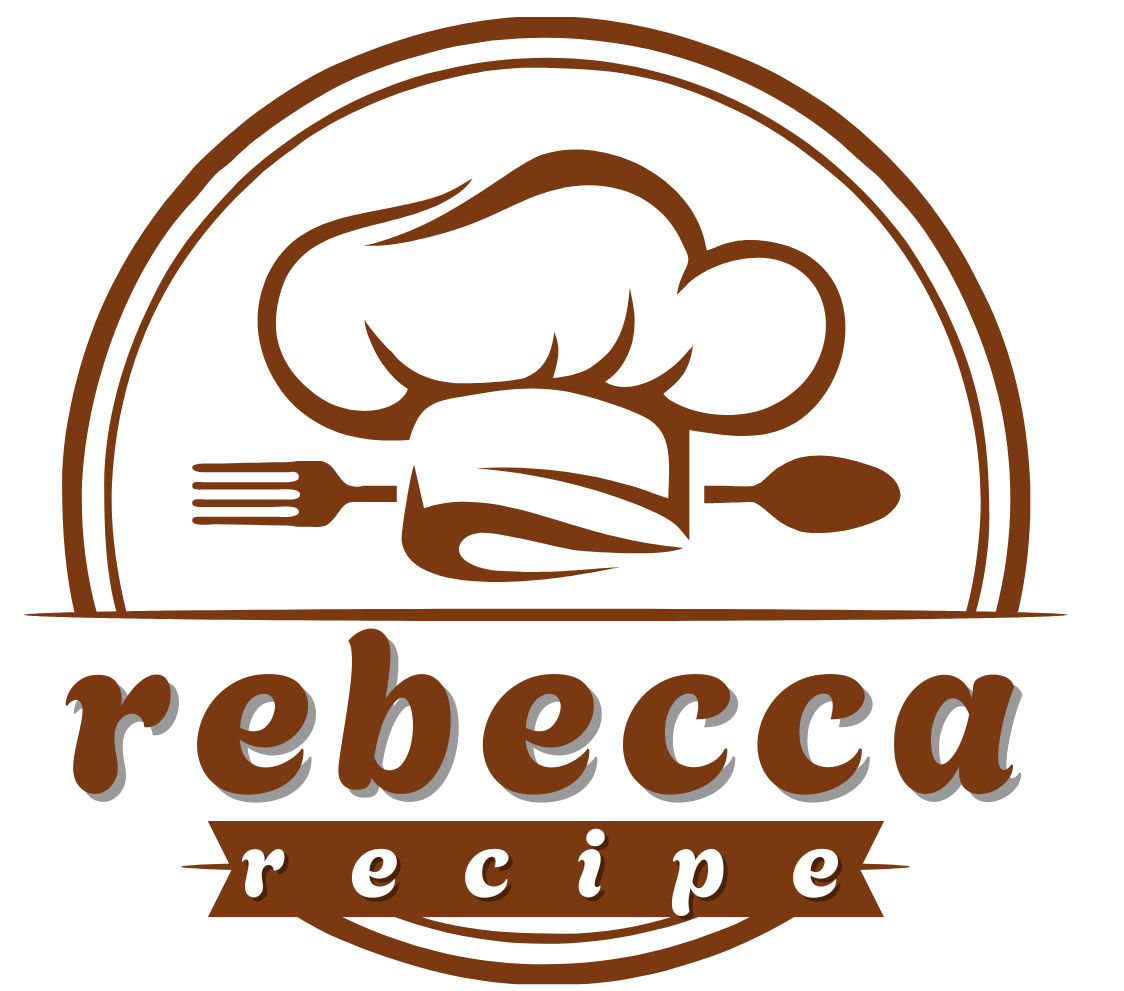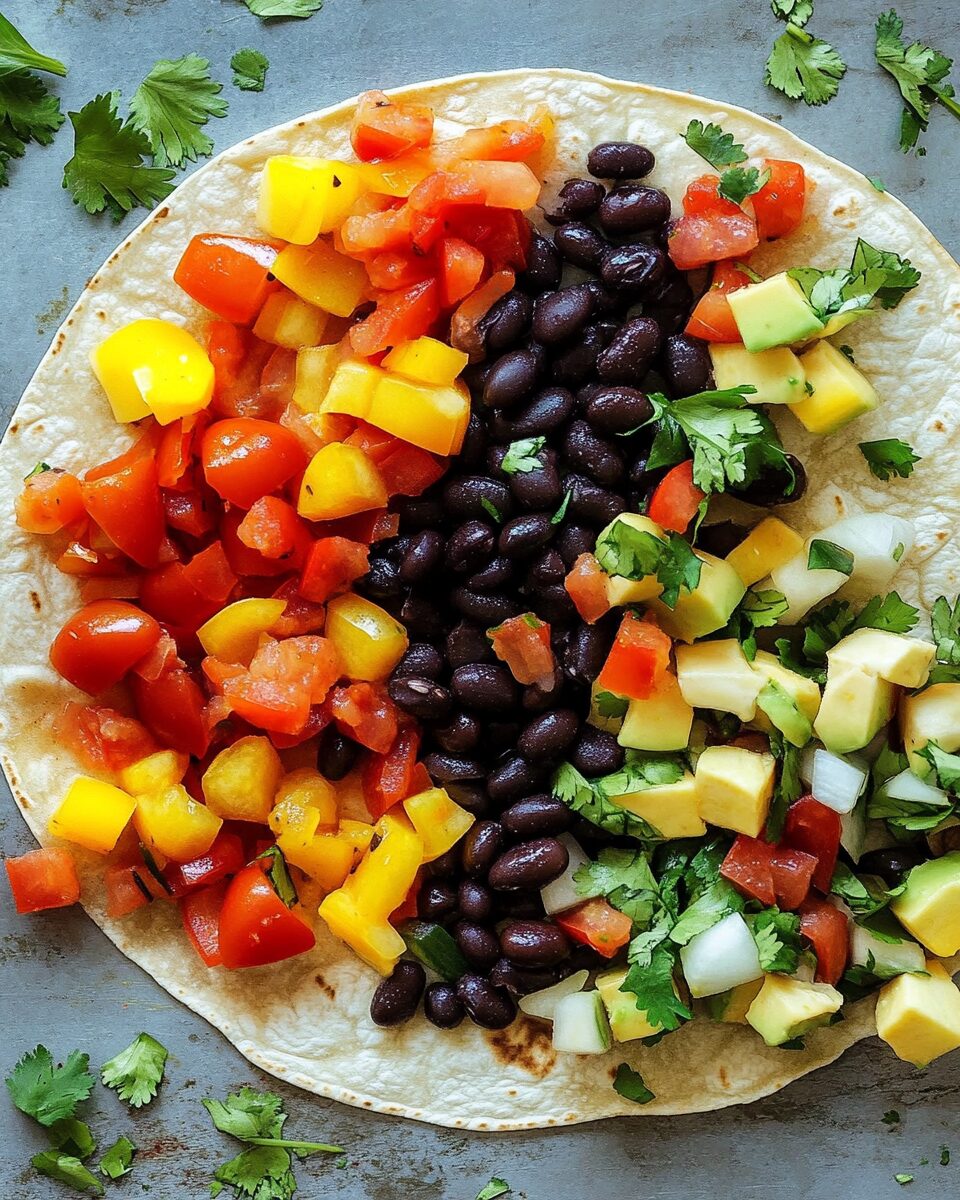These Black Bean and Vegetable Burritos are a hearty and flavorful vegetarian option, perfect for a satisfying lunch or dinner. Packed with protein-rich black beans, colorful vegetables, and warm spices, they offer a delicious and nutritious meal that’s easy to prepare and enjoy.
Full Recipe:
Ingredients
- 4 flour tortillas (9 to 10 inches in diameter)
- 3/4 cup chopped onion
- 2 teaspoons vegetable oil
- 1/2 teaspoon ground cumin
- 1/2 teaspoon chili powder
- 1 cup chopped red bell pepper
- 2/3 cup frozen corn kernels, thawed
- 1 medium carrot, coarsely grated
- 1 2/3 cups canned black beans, rinsed and drained
- 1/2 cup drained canned Mexican-style stewed tomatoes
- 2 teaspoons minced seeded jalapeño chile
- 8 tablespoons grated Monterey Jack cheese (about 2 ounces)
- 4 tablespoons nonfat sour cream
- 4 tablespoons chopped fresh cilantro
Directions
- Preheat the oven to 350°F (175°C). Wrap the tortillas in foil and warm in the oven until heated through, about 15 minutes.
- In a large nonstick skillet, heat the vegetable oil over medium-high heat. Add the chopped onion and cook, stirring, until golden, about 6 minutes.
- Add the ground cumin and chili powder to the skillet and stir for about 20 seconds to release their aromas.
- Stir in the chopped red bell pepper, thawed corn, and grated carrot. Sauté the mixture until the vegetables are almost tender, about 5 minutes.
- Add the black beans, stewed tomatoes, and minced jalapeño to the skillet. Bring the mixture to a simmer, then season with salt and pepper to taste. Remove from heat.
- Place the warmed tortillas on a work surface. Spoon the vegetable and bean filling down the center of each tortilla, dividing the mixture equally.
- Top each with 2 tablespoons of grated Monterey Jack cheese, then add 1 tablespoon each of nonfat sour cream and chopped fresh cilantro.
- Fold the sides of the tortillas over the filling, forming neat packages. Place each burrito seam side down on a plate and serve.
Nutritional Facts (Per Serving)
- Calories: 387
- Total Fat: 10g
- Saturated Fat: 3g
- Cholesterol: 13mg
- Carbohydrates: 60g
- Fiber: 10g
- Sugars: 6g
- Protein: 16g
- Sodium: 600mg
The Origins of Burritos
The burrito is one of the most iconic dishes in Mexican cuisine, and its origins date back to the early 20th century. Although the exact origin of the burrito is debated, many historians believe it was first created in northern Mexico. The word “burrito” translates to “little donkey” in Spanish, and some believe the dish got its name because it was easy to carry, much like a small bundle that could be packed onto a donkey. Others believe it refers to the way the ingredients are wrapped up tightly in a tortilla, much like a donkey’s pack.
While burritos are often associated with Mexican food, the modern burrito we know today—with its flour tortilla filled with a variety of ingredients such as beans, meat, rice, and vegetables—was likely popularized in the United States, particularly in California and Texas, where they became a fast food sensation.
Traditionally, burritos are made with a flour tortilla, but regional variations exist. In northern Mexico, for example, the burrito is often filled with meat, potatoes, and beans, while in the U.S., burritos have evolved to include a wide range of fillings, from grilled chicken to shrimp to vegetarian options like the Black Bean and Vegetable Burritos we’re discussing here.
The Nutritional Benefits of Black Beans
Black beans are a staple in many cultures and cuisines around the world, particularly in Latin American and Caribbean dishes. Not only do they provide a rich, earthy flavor that complements a variety of other ingredients, but they are also incredibly nutritious.
Black beans are an excellent source of plant-based protein, which makes them an ideal ingredient for vegetarian and vegan diets. A single serving of black beans provides approximately 15 grams of protein, which is about 30% of the daily recommended intake for adults. This makes black beans an essential ingredient for those looking to maintain muscle mass or looking for a filling, meat-free meal.
In addition to protein, black beans are also high in fiber, which is important for maintaining a healthy digestive system. A single serving of black beans contains around 15 grams of fiber, which can help regulate bowel movements and keep you feeling full for longer. Fiber also plays a crucial role in lowering cholesterol levels and controlling blood sugar, making black beans a heart-healthy addition to your diet.
Black beans are also packed with essential vitamins and minerals, including iron, magnesium, and folate. Iron is essential for the production of red blood cells, while magnesium helps regulate blood pressure and supports the function of muscles and nerves. Folate is especially important for pregnant women, as it helps prevent birth defects in the developing fetus.
The Health Benefits of Vegetables in Burritos
Incorporating a variety of vegetables into your burrito not only enhances the flavor and texture but also boosts the nutritional content of the meal. Vegetables are an important source of vitamins, minerals, and antioxidants, which can help improve overall health and prevent chronic diseases.
Bell peppers, for example, are rich in vitamin C, an antioxidant that helps protect cells from damage and supports a healthy immune system. Carrots are another great addition to burritos, as they provide a good amount of beta-carotene, which the body converts into vitamin A. Vitamin A is important for maintaining healthy vision, skin, and immune function.
Other vegetables like onions and jalapeños add flavor and spice to the burritos while providing beneficial compounds like sulfur compounds and capsaicin. Onions have been shown to support heart health by reducing inflammation and improving blood circulation, while capsaicin, the compound responsible for the heat in jalapeños, has been linked to improved metabolism and fat burning.
By adding a variety of colorful vegetables to your burrito, you are not only enhancing the dish’s flavor but also increasing the variety of nutrients you consume. This makes the burrito a more balanced, healthful meal that is both satisfying and nourishing.
Why Black Bean and Vegetable Burritos Are Perfect for Meal Prep
Black Bean and Vegetable Burritos are a fantastic option for meal prepping. Meal prepping is the practice of preparing meals in advance, usually for a week, so that you have healthy options available when you are short on time or don’t feel like cooking. These burritos are easy to make in large batches, and they store well in the fridge or freezer for later use.
When meal prepping with burritos, you can make a large batch of the filling and assemble the burritos ahead of time. Once wrapped, they can be stored in the refrigerator for up to 3-4 days or frozen for up to 3 months. When you’re ready to eat, simply heat them up in the microwave or oven for a quick and satisfying meal. This is particularly convenient for busy individuals who want to ensure they have nutritious, home-cooked meals throughout the week.
The best part about meal prepping Black Bean and Vegetable Burritos is that you can customize the filling to suit your tastes and dietary preferences. You can add different vegetables, swap in your favorite beans, or even add some extra protein, like tofu or tempeh, for a vegan-friendly version.
Customizing Black Bean and Vegetable Burritos
While the classic Black Bean and Vegetable Burrito is delicious on its own, there are countless ways to customize the recipe to suit your personal tastes or dietary needs.
For those who enjoy a little extra spice, you can add more jalapeños, hot sauce, or a pinch of cayenne pepper to the filling. You can also experiment with different types of beans, such as pinto beans or kidney beans, if you prefer a slightly different flavor or texture. For a richer taste, try adding some sautéed mushrooms or a drizzle of avocado salsa.
If you’re looking for a lighter version of the burrito, consider using whole wheat tortillas or even lettuce wraps in place of the flour tortillas. Whole wheat tortillas provide extra fiber and nutrients, while lettuce wraps offer a fresh, low-carb alternative.
For a more indulgent twist, you can add shredded cheese or sour cream to the filling. However, if you are looking to keep the recipe vegan or dairy-free, there are plenty of plant-based cheese and sour cream alternatives available on the market that can easily be substituted in.
Serving Suggestions
Black Bean and Vegetable Burritos are incredibly versatile and can be served in a variety of ways to suit any occasion. They make a great lunch or dinner when paired with a simple side salad or some tortilla chips and salsa. For a complete meal, consider serving the burritos with a refreshing guacamole or a tangy lime-based slaw.
For larger gatherings or parties, you can create a burrito bar where guests can assemble their own burritos with a variety of fillings, toppings, and sauces. This adds an element of fun and customization to the meal, making it an interactive dining experience that everyone will enjoy.
Another great serving option is to serve the burritos with a side of roasted vegetables, such as sweet potatoes, zucchini, or butternut squash. The natural sweetness of the roasted vegetables complements the savory flavors of the burritos and adds extra nutrients to the meal.
Conclusion
Black Bean and Vegetable Burritos are a delicious, nutritious, and easy-to-make meal that can be enjoyed by people of all ages and dietary preferences. With their combination of protein-packed black beans, colorful vegetables, and warm spices, these burritos offer a satisfying and well-balanced meal that is perfect for any occasion.






